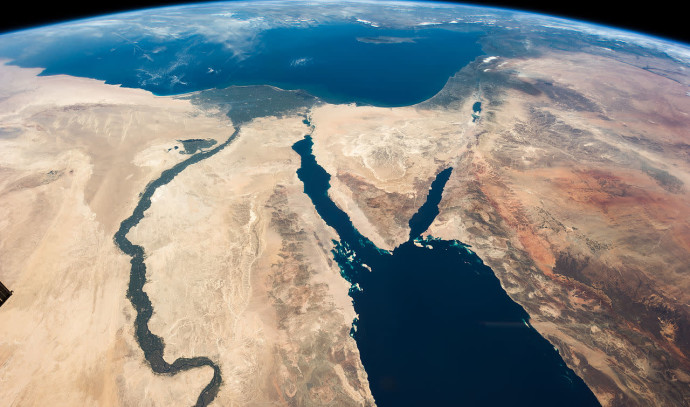Large quantities of Earth’s water may have resulted from a chemical interaction and not visits by ice-filled asteroids and comets, as scientists believe, according to new research by an Israeli-born scientist in Washington, DC.
“We demonstrated that early in Earth’s existence, interactions between the magma ocean and a molecular hydrogen proto-atmosphere could have given rise to some of Earth’s signature features, such as its abundance of water and overall oxidized state,” explained Dr. Anat Shahar, a staff scientist and deputy for research advancement at Carnegie Science.
Shahar’s research was published on Wednesday in Nature.
It is widely agreed by scientists that Earth and other rocky planets were formed from disks of dust and gas that surrounded our newly formed sun. As these disks interacted, they started to form larger clumps, known as planetesimals. The baby planetesimals that eventually created Earth grew hotter and larger until they melted into a vast magma ocean.
“Over time, as the planet cooled, the densest material sank inward, separating Earth into three distinct layers – the metallic core, and the rocky, silicate mantle and crust,” Shahar said.
Even though there were likely water molecules in the debris that made up the disk, scientists understood that it was too hot for the water to condense into a liquid – so it would evaporate instead. Moreover, even if it had become liquid, Earth was not assumed to have an atmosphere, meaning that any liquid droplets would have been sucked into space.
Simulating a baby Earth
Shahar and her team – co-researchers from the University of California – simulated a baby Earth with a hydrogen atmosphere using a new modeling approach. In this scenario, the magma ocean and the atmosphere would have interacted, resulting in large masses of hydrogen moving into the metallic core, the oxidation of the mantle and the production of large quantities of water.
“This hydrogen-rich atmosphere surrounding the magma ocean acts like a blanket,” Shahar said. “It traps the heat already on Earth and does not allow it to escape. The planet then stays in the magma ocean phase for longer, and chemistry happens between the hydrogen-rich atmosphere and the magma ocean. It would be responsible for all our Earth’s features today, including water.”
She said that her research does not mean asteroids and comets didn’t bring water, just that this explanation would no longer be necessary to explain Earth’s current state.
It also would not mean that humans will ever be able to access the water locked up within the Earth itself in the transition zone, around 660 kilometers below the surface.
“What we have is what we have, and we need to take care of it,” she said of the Earth’s water sources. “No matter how much water is ‘in earth,’ we cannot access it and use it for drinking.”
Shahar began researching whether Earth could have been surrounded by a hydrogen disk two years ago as part of the interdisciplinary, multi-institution Aether project she is leading. The project aims to reveal the chemical makeup of the Milky Way galaxy’s most common planets and to develop a framework for detecting signatures of life on distant worlds.
The study of what are known as “exoplanets” – planets beyond our solar system – began only in the last few decades. Shahar said scientists had discovered these hydrogen disks around many exoplanets, and she and her team wanted to know why this could not have been the case with Earth.
“Exoplanet discoveries have given us a much greater appreciation of how common it is for just-formed planets to be surrounded by atmospheres rich in molecular hydrogen, H2, during their first several million years of growth,” Shahar explained. “Eventually, these hydrogen envelopes dissipate, but they leave their fingerprints on the young planet’s composition.”
Shahar said her team used what it learned about exoplanets and applied it to Earth.
“Until 30 years ago, we thought there were only nine planets,” Shahar continued. “Over the last few decades, planets outside our solar system have been found orbiting stars elsewhere. Astronomers say that if you look at the sky now, almost every star you see is likely to have planets that orbit it – extrasolar planets or exoplanets.”
“Astronomers say that if you look at the sky now, almost every star you see is likely to have planets that orbit it”
Dr. Anat Shahar
More recently, with the launch of the Kepler mission and now the James Webb Space Telescope, scientists better understand these exoplanets, including their mass, radius and density. In addition, they have found that many of them still have this rich hydrogen atmosphere around them.
Does that mean there could be life on those planets, too?
“Liquid water is what you need to have life – we think,” Shahar said. “We wanted to see if you could make water using pure chemistry. Knowing you can create water with a rich hydrogen disk and a planet of hot magma means that many of these exoplanets probably have water, too.
“If you put those things together – you need liquid water to have life, and these planets probably have water – now you can start to search for what is called a biosignature – a signature of life within an atmosphere.”




